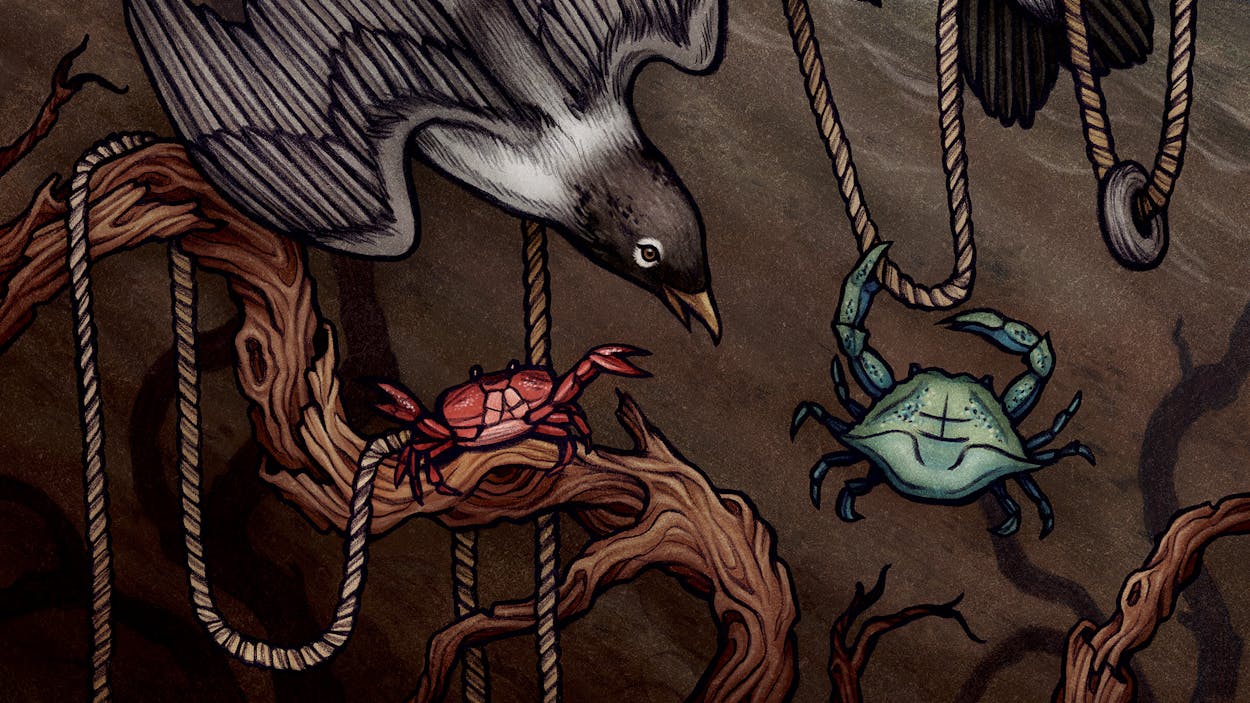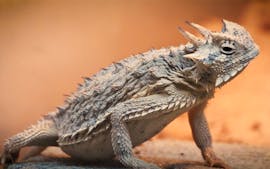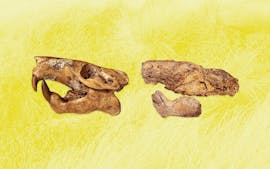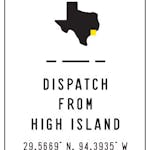 You can always smell the salt on the breeze on the Bolivar Peninsula, and slices of life seldom come thinner: its 2,196 souls huddle together on a spit of land that narrows down to a mere quarter-mile sliver at Rollover Pass, and east of that, the Texas coast takes on a Louisiana-like form: no beaches, just raw land eroding away, slowly day by day, and then all at once during storms.
You can always smell the salt on the breeze on the Bolivar Peninsula, and slices of life seldom come thinner: its 2,196 souls huddle together on a spit of land that narrows down to a mere quarter-mile sliver at Rollover Pass, and east of that, the Texas coast takes on a Louisiana-like form: no beaches, just raw land eroding away, slowly day by day, and then all at once during storms.
And what storms. Here, to live on the watery edge, is to know the precariousness of life and the inexorable forces outside oneself: the Ritas and the Ikes that can fell one’s entire livelihood in an instant, the rising tides that can swallow a lifetime of memories in a few hours, the salty storm surges that can infiltrate sewers and send a biblical plague of rats into the streets as they desperately seek high ground. Those who live inland, in gleaming, bustling urban centers, can battle nature with convenience—blast the air conditioner, keep a casual eye on the televised footage of meteorologists—but to live on the coast is to be stripped of that ease. Here, it is about knowing when and how to seek safety, when and how you might lose everything.
I know this because I am bound to this stretch of land by family and genetic memory. For generations, going back to the Republic, my maternal grandmother’s people, the Plummers, plied these shores in wooden ships and steamers, as deckhands and captains, until my last direct male ancestor died, in 1964, six years before I was born. My grandmother, Susy Plummer Taylor, would bring them to life for me with tales of their nautical adventures, and these were so fantastical, so full of magical realism, that for a long time I thought I’d dreamed them. Only later, when I went searching the internet, did I find that they were fact.
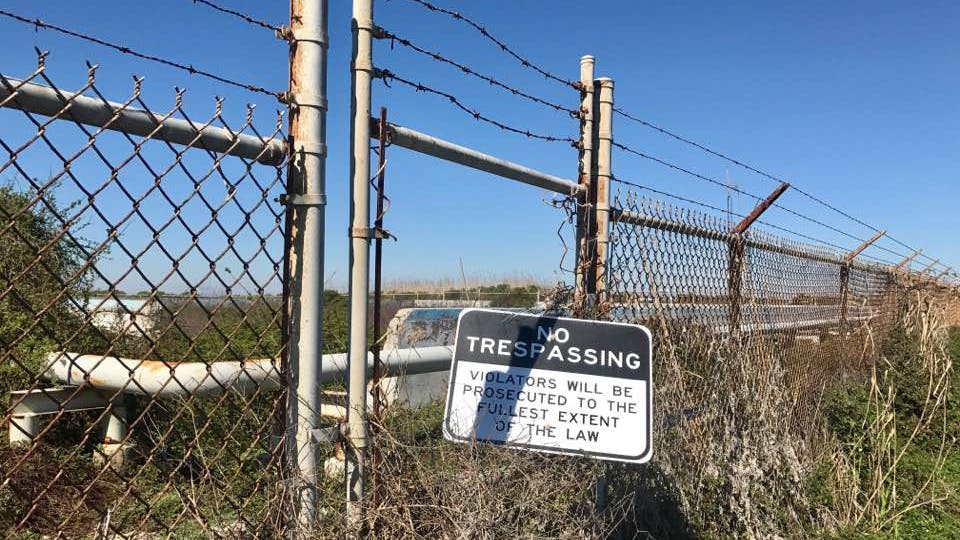
Take my kinsmen, Captains Cott and Fred Plummer, who one time used a lasso and a steam tugboat named Florida to chug an ailing 63-foot, 65-ton sperm whale, mortally injured from swimming into too-shallow waters, from the open gulf to Port Arthur in 1910. “Jonah was found at the wheel and had been ticketed for not having a valid pilot’s license,” one newspaper reported, tongue-in-cheek, of the men’s adventure. The poor beast died en route, but Port Arthur boosters sensed an opportunity, and the giant mammal was hauled onto shore, then gutted and crammed with ice, the better to keep it fresh. Telegraphs were sent to newspapers everywhere within a three-hundred-mile radius to announce the presence of the gargantuan “fish,” and in response, no fewer than five railroads sent passenger trains on special excursions, their cars containing an estimated 20,000 gawkers altogether. And that was just on day one; according to one account, over the next few days, some 250,000 would-be Moby Dick viewers “were left stranded in depots” across the Southwest when additional trains were filled to capacity.
After a week and a half, despite the best efforts of the ad hoc taxidermists, the whale began to emit a rank aroma, though that didn’t dissuade the crowds: they simply covered their noses with handkerchiefs. “Everybody had a stinking good time,” noted one reporter. Nevertheless, the whale was decreed a public health hazard, and its blubber was rendered into oil, its hide preserved and stuffed by my Plummer folks and then exhibited across the South, though to dwindling interest. Eventually Fred and Cott sold the carcass to an amusement-park operator, and I heard from my grandmother that its head was being used as an ice cream parlor in Memphis when it caught fire and finally met its end, many miles up the Big Muddy from its home. The Plummers’ Mammoth Whale Company traveling show was a financial failure, but in the end Fred and Cott probably caught the biggest “fish” in Gulf of Mexico history, and nobody can ever take that from them.
Those were the tales my grandmother told. Those and how the Plummers rode out nineteenth-century hurricanes in the upper floors of lighthouses in Sabine Pass or on High Island; or how her father, Captain Howard Carlton Plummer, who piloted ships on the Neches River and Galveston Bay, was launched from the deck of the U.S.S. Portent after a mine or torpedo hit the ship during World War II, a blast that stripped him nude; or how, at the start of the Civil War, other ancestors had fled Texas for a decade-long exile in Maine after some of their neighbors literally poisoned their well.
Which is all a long way of saying that if any stretch of Texas coast is mine, this is the one. It is also pretty much the only part I’ve never really traveled, which is how I came to find myself, one morning in early spring, on that mostly inaccessible stretch of beach east of High Island, all the way to Sabine Pass, along what used to be State Highway 87. The highway still exists—it runs through parts of Galveston and the Bolivar Peninsula, and up along the edge of East Texas—but the 16-mile stretch that once lay between High Island and Sabine Pass does not. The road was washed out once, twice, and three times by hurricanes before authorities decided to surrender to time and tide and let go, the last straw being when it was inundated twice in 1989, first by Chantal and then by Jerry. Few traces of the old highway now remain. It is passable only with a four-wheel-drive vehicle.
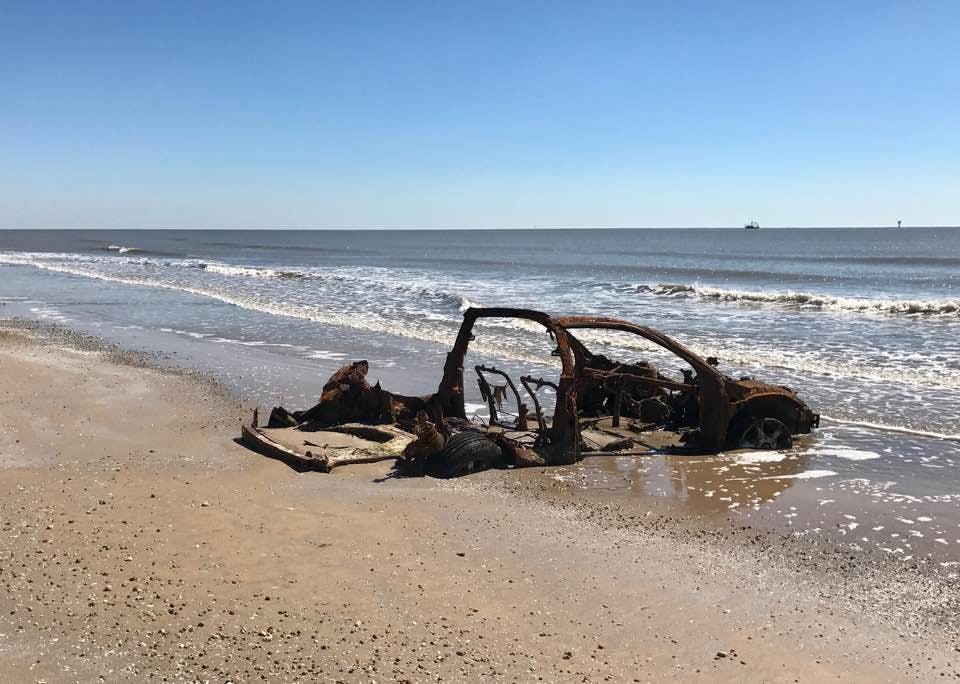
I’d always been curious about this ghost of a highway, and thanks to Facebook, I found a guide who would take me to it: Bryan Camp, a retired Department of Public Safety trooper and Jeep owner who lives in Crystal Beach. We met up in what passes for High Island’s downtown: a convenience store/motel combo a few hundred yards from the beach. I parked by a fifteen-foot cross that marks the end of civilization, jumped in Camp’s Jeep, and we slowly headed east.
We were met first thing by a few signs that read “No children. No clothes.” This is one of only two nude beaches on salt water in Texas (the other is on South Padre Island), not officially sanctioned but nevertheless flourishing, though not as much as in the nineties, according to Camp. Apprehending the nudists is a major pain for the authorities, who by the quirks of the Texas map would have to haul them about 45 miles from the isolated beach, going through Winnie, to get to the jail in Beaumont, all for an au naturel spree at the back end of nowhere. “They ought to put some barricades and make it a park,” said Camp, maneuvering through rivulets and flotsam and jetsam. None of the naturists were in evidence, but it was early in the week. “Come back tomorrow or the next day,” Camp said. “They’ll be there.”
Not long after that, we came upon the first of several dead dolphins we’d encounter on the trip. Shades of the Plummer leviathan, in miniature. I’d never seen a beached dolphin in all my years of Galveston, Padre Island, and Port Aransas beachgoing, so I asked to stop and take pictures. The smell soon overwhelmed me, despite my using my shirt to cover my nose; I could imagine how horribly that whale, at about 150 times the size of a dolphin, must have hummed in the humid air.
The usual beach scavengers—gulls and crabs and the like—seemed to shun the dolphins, which were blackening in the sun, though a caracara and a couple of gulls squabbled over the bloody remains of a brown pelican. Sitting there, bedeviled by biting flies, we heard the sounds of a chopper thundering high overhead. I assumed it was the Coast Guard and thought nothing of it, but a few minutes later, it came by again from the other direction, this time well less than one hundred feet above the ground. Agents from U.S. Customs and Border Protection, it appeared, were checking us out.
The sea was preternaturally calm, more placid than a lake. Watching the water lap the beach with all the gentleness of a sleepy infant against its mother’s breast, it was hard to think of the boundless gulf as a destructor. Even so, our talk turned to hurricanes; storms are what you talk about in this part of Texas. I told Camp how I’d been vacationing with my ex-wife, son, and daughter in Crystal Beach when Tropical Storm Edouard landed, in 2008, and how the storm had brought little more than slantwise rain, forbidding clouds, and better beachcombing than usual. A few weeks later, Ike had blown ashore and obliterated not just the beach house we’d rented but the entire neighborhood, along with much of the peninsula. Camp nodded. “You know that famous picture of that one house standing after the storm?” he asked. “I tell people, ‘That wasn’t mine.’ ”
I asked if he’d known any of the people who’d ridden the storm surge across the bay to the mainland on household detritus—doors, coolers, and the like. He did: a man who’d been known as the town drunk (which takes some doing in Crystal Beach), who, after his near-death experience, had reemerged as a strong Christian and one of the friendliest, most helpful men on the peninsula. Camp and his family eventually rebuilt their house, but the area is forever changed. Many of the working-class denizens have had to move on, thanks to higher insurance premiums on their homes and more stringent construction standards. Many of the restaurants saw that they would have trouble staffing even if they jumped through all the hurdles of rebuilding, so there are now only a fraction of the eateries that were there pre-Ike. “I do like that there are no chains,” said Camp. “Living here is like going back to the seventies.”
We continued on our drive, and the beach carried on more or less monotonously, broken by the occasional sight that attested to the ocean’s intermittent ferocity. Deer and coyote tracks were imprinted on the grayish-brown sand. We passed a couple of abandoned pipeline terminals, rusting in the sun and salt, one belonging to Arco, another to Kinder Morgan. We also saw two corroded hulks of cars, stranded in the surf up to the tops of their wheels, looking like war relics on some South Pacific island. As a former auto-theft officer, Camp was full of theories. “Maybe they were stolen and abandoned there,” he said. “Or maybe the owners got stuck in the sand, and then the tide came in, and they just reported it stolen and collected the insurance.”
I thought about how Texas is one of the only American states to have lost not just multimillion-dollar investments to the sea but also entire cities. Like Indianola, once a principal town in the state’s early days, a port second only to Galveston and a strategic entrepôt vital enough for the Union Army to occupy not once but twice. After two hurricanes, it has vanished. What had once been the site of the Matagorda County courthouse now sleeps, a hundred yards from shore, in a saltwater grave, and Galveston almost met the same fate in 1900. Given a direct hit from a category 5, it could still disappear one day, even despite the seawall, which has done nothing to prevent catastrophic flooding from the bay side of the Island.
Camp and I turned around and headed back to the old rugged cross at the edge of settled Texas. All of it—the pipelines, the cars, the disappearance of a once-vital road—reminded me of my son, who is now twenty and in the Army. As a toddler, he once had a mock tantrum when one too many of his sand castles, each built too close to an incoming Galveston tide line, was erased by the relentless surf. “Ocean!” he yelled, raising his little fist in the air. “Stop that!”
We are all exactly that feeble against this force. The ocean never does stop that, and this is where Texas gives way to Louisiana, the state with 397 miles of vanishing coastline and almost no beaches. East of the Bolivar Peninsula, on that narrow stretch en route to Sabine Pass, there are no barrier islands to protect the storm-wracked mainland. In fact, the area once functioned as a seawall: there was a natural ridgeline made of shells and sand that was used as a trail by Native Americans, then Spaniards, then Texans. Then the ridge was bulldozed and repurposed to grade Highway 87, the road that no longer exists, and the one bulwark against the sea was gone.


